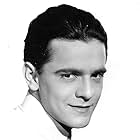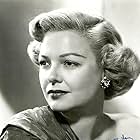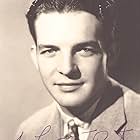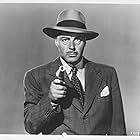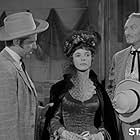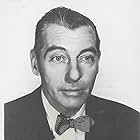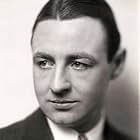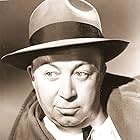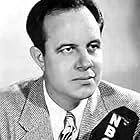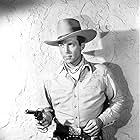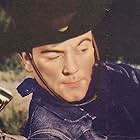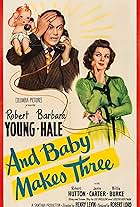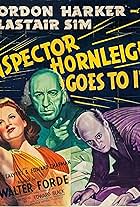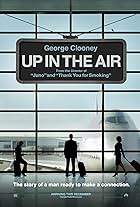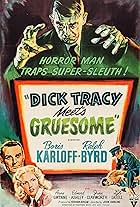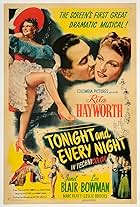Aggiungi una trama nella tua linguaA none-too-popular (nor good) radio singer, Rita Wilson is murdered while singing on the air in a radio studio. Radio page boy, Frankie Ryan, and his janitor pal, Jeff, solve the mystery for... Leggi tuttoA none-too-popular (nor good) radio singer, Rita Wilson is murdered while singing on the air in a radio studio. Radio page boy, Frankie Ryan, and his janitor pal, Jeff, solve the mystery for the none-too-sharp police.A none-too-popular (nor good) radio singer, Rita Wilson is murdered while singing on the air in a radio studio. Radio page boy, Frankie Ryan, and his janitor pal, Jeff, solve the mystery for the none-too-sharp police.
Foto
Lorna Gray
- Rita Wilson
- (as Lorna Grey)
Phil Kramer
- Gag-Writer
- (non citato nei titoli originali)
Jack Mather
- Tim Wallace
- (non citato nei titoli originali)
Dennis Moore
- Pringle
- (non citato nei titoli originali)
George Morrell
- Rita Wilson Fan
- (non citato nei titoli originali)
Bob Terry
- Sound Engineer
- (non citato nei titoli originali)
Trama
Lo sapevi?
- QuizThe earliest documented telecast of this film in the New York City area occurred Saturday 6 May 1944 on pioneer television station WNBT (Channel 1). Post-WWII television viewers got their first look at in Detroit Wednesday 24 August 1949 on WXYZ (Channel 7), in Los Angeles Tuesday 13 September 1949 on KTLA (Channel 5) and in New York City Sunday 23 April 1950 on WPIX (Channel 11).
- ConnessioniRemade as There Goes Kelly (1945)
- Colonne sonoreDoin' The Conga
by Lew Porter, Johnny Lange and Edward J. Kay (as Edward Kay)
Sung by Lorna Gray (uncredited)
Later sung by Marjorie Reynolds (uncredited)
Recensione in evidenza
Up in the Air, a quickie 1940 B movie cranked out on a tight budget and on an even tighter shooting schedule, is worth viewing at least once. It's representative of all those cheap bread-and-butter movies the studios churned out designed to fill the lower bill of America's movie houses. If you don't have some familiarity with these films you just won't understand what a lot of Hollywood was about before and, to a degree, right after WWII. For every Clark Gable, Rita Hayworth and John Ford, there were thousands of journeymen, men and women, directing, writing, acting in and making possible all these movies. The movie, only 61 minutes long, is a comedy murder mystery which was a popular staple back then. This time the formula also calls for songs. There are three original ones and, like the movie, they're not bad. It stars a long forgotten actor named Frankie Darrow, who was big stuff in the B movie business back in the mid-Thirties through the mid-Forties. Darrow was a small, lean guy who got his start as a child actor. His big years were spent playing jockeys and high school students. At 5' 3" and when tastes changed right after WWII, Darrow was quickly left behind after he returned from the Navy. By 1950, when he was 33, he was only getting bit parts. He and a partner finally bought a bar in Hollywood, a bad move. Darrow became a serious alcoholic, but at least a relatively good-natured one. Except for occasional movie and television bits, he was washed up. If you admire Robby the Robot in Forbidden Planet, Darrow was one of two men hired to take turns being inside Robby to make him move. That's show biz, kids.
One other interesting thing to note. This is one of seven films Darrow made between 1939 and 1941 in which he always plays a young man named Frankie and always partners with a buddy named Jeff. The two invariably get mixed up in mystery, with Frankie determined to solve the crime and Jeff reluctantly backing him up. The interesting thing is that Jeff in these seven movies always is played by Mantan Moreland. Although Moreland does his trademark eye-popping, it's not as exaggerated as it usually was. There's almost none of the foot- shuffling and chitlin dialect that Hollywood made its black actors use. Except for one, thankfully brief (but funny) comedy routine Darrow and Moreland do as Rastus and Mose with Darrow in blackface (but which Moreland dominates), the Jeff character is, for Hollywood of the period, unusually color blind.
With Up in the Air, Darrow plays Frankie Ryan, an energetic and confident young man employed as a page at Amalgamated Broadcasting Company. His ambition is to snag a comedy spot on one of its radio shows. He meets Anne Mason (Marjorie Reynolds), newly hired as a lobby greeter who wants to be a singer. Wouldn't you know it, Rita Wilson, the snooty and well-known singer on one of Amalgamated's top shows, takes a bullet in the heart during a rehearsal. Frankie is determined to find the killer, promote Anne into the singing slot, and at least get a comedy try-out chance with Jeff in front of the producers. Frankie is the kind of inexhaustibly active fellow who always snaps his fingers when he gets an idea, then charges out of the room, or down the hall, or up the stairs, or through a doorway. Eventually, sometimes with the help of the police and sometimes not, Frankie, with Jeff close behind, makes the killer come forth. There are no great surprises. The acting is competent and the movie moves quickly through its 61 minutes. Up in the Air isn't a waste of time exactly, but it helps if you do a little reading about Darrow and Hollywood's B-movie factories.
About those three songs. Unlike the movie, they're worth experiencing more than once. "Doin' the Congo," written by Edward Kay, Lew Porter and Johnny Lange, is a very nice Latin rhythm number. "Somehow or Other" and "By the Looks of Things," written by Kay and Harry Tobias, are light swing numbers. "By the Looks of Things," especially, is a song that is much better than it needed to be. Marjorie Reynolds sings all three.
One other interesting thing to note. This is one of seven films Darrow made between 1939 and 1941 in which he always plays a young man named Frankie and always partners with a buddy named Jeff. The two invariably get mixed up in mystery, with Frankie determined to solve the crime and Jeff reluctantly backing him up. The interesting thing is that Jeff in these seven movies always is played by Mantan Moreland. Although Moreland does his trademark eye-popping, it's not as exaggerated as it usually was. There's almost none of the foot- shuffling and chitlin dialect that Hollywood made its black actors use. Except for one, thankfully brief (but funny) comedy routine Darrow and Moreland do as Rastus and Mose with Darrow in blackface (but which Moreland dominates), the Jeff character is, for Hollywood of the period, unusually color blind.
With Up in the Air, Darrow plays Frankie Ryan, an energetic and confident young man employed as a page at Amalgamated Broadcasting Company. His ambition is to snag a comedy spot on one of its radio shows. He meets Anne Mason (Marjorie Reynolds), newly hired as a lobby greeter who wants to be a singer. Wouldn't you know it, Rita Wilson, the snooty and well-known singer on one of Amalgamated's top shows, takes a bullet in the heart during a rehearsal. Frankie is determined to find the killer, promote Anne into the singing slot, and at least get a comedy try-out chance with Jeff in front of the producers. Frankie is the kind of inexhaustibly active fellow who always snaps his fingers when he gets an idea, then charges out of the room, or down the hall, or up the stairs, or through a doorway. Eventually, sometimes with the help of the police and sometimes not, Frankie, with Jeff close behind, makes the killer come forth. There are no great surprises. The acting is competent and the movie moves quickly through its 61 minutes. Up in the Air isn't a waste of time exactly, but it helps if you do a little reading about Darrow and Hollywood's B-movie factories.
About those three songs. Unlike the movie, they're worth experiencing more than once. "Doin' the Congo," written by Edward Kay, Lew Porter and Johnny Lange, is a very nice Latin rhythm number. "Somehow or Other" and "By the Looks of Things," written by Kay and Harry Tobias, are light swing numbers. "By the Looks of Things," especially, is a song that is much better than it needed to be. Marjorie Reynolds sings all three.
I più visti
Accedi per valutare e creare un elenco di titoli salvati per ottenere consigli personalizzati
Dettagli
- Data di uscita
- Paese di origine
- Lingua
- Celebre anche come
- Assassinato ao Microfone
- Azienda produttrice
- Vedi altri crediti dell’azienda su IMDbPro
- Tempo di esecuzione1 ora 2 minuti
- Colore
- Proporzioni
- 1.37 : 1
Contribuisci a questa pagina
Suggerisci una modifica o aggiungi i contenuti mancanti

Divario superiore
By what name was Up in the Air (1940) officially released in Canada in English?
Rispondi



